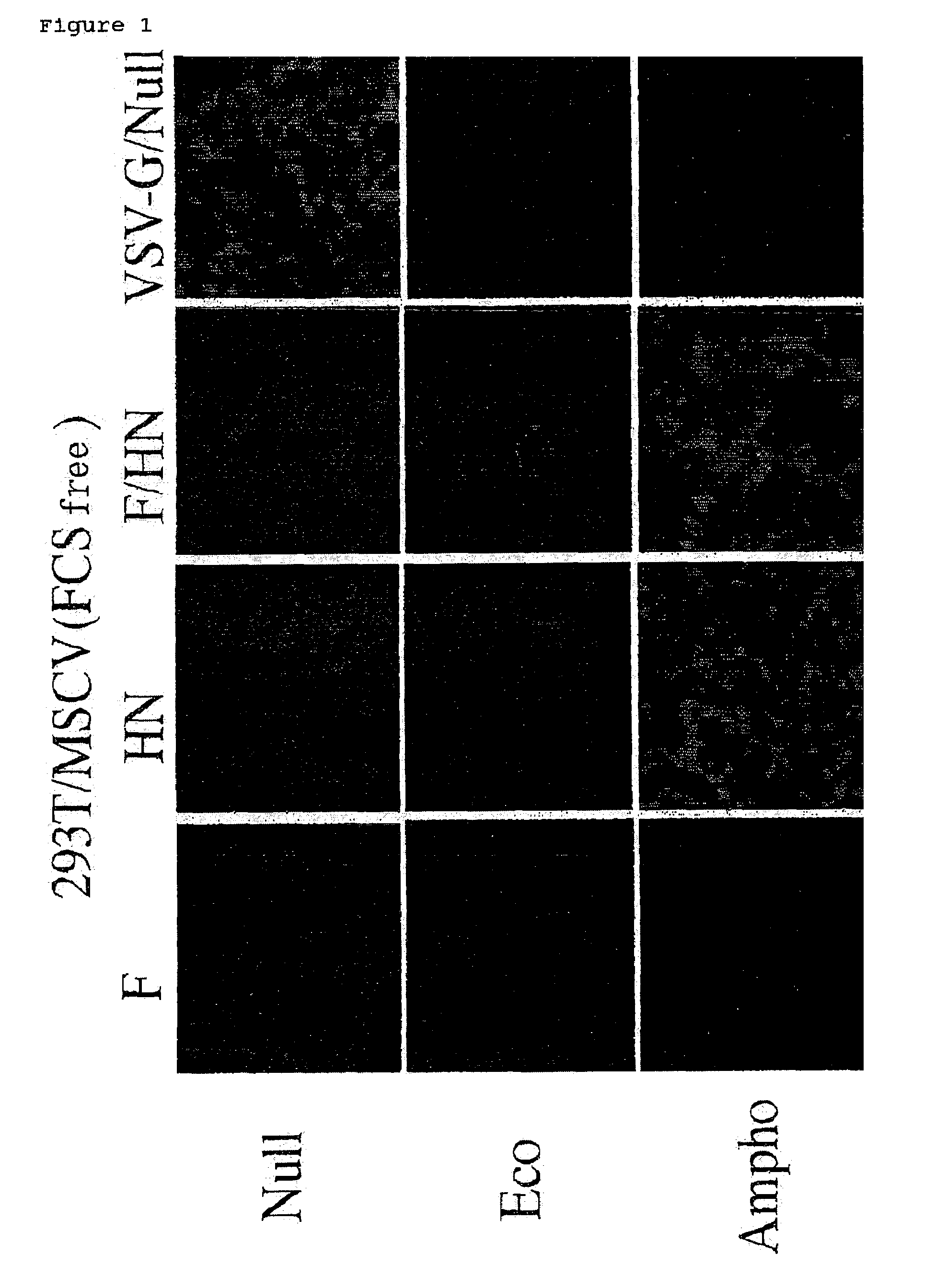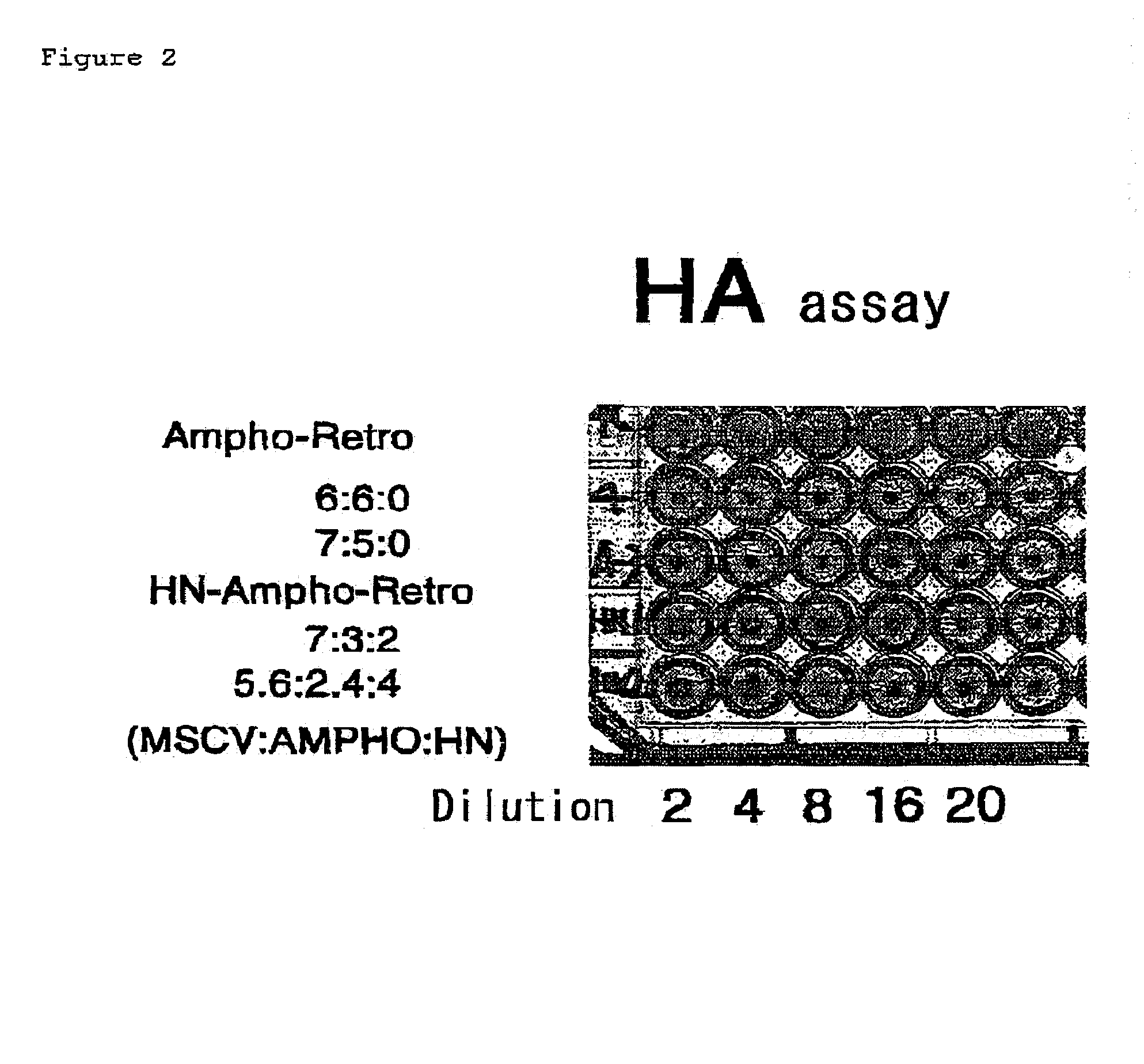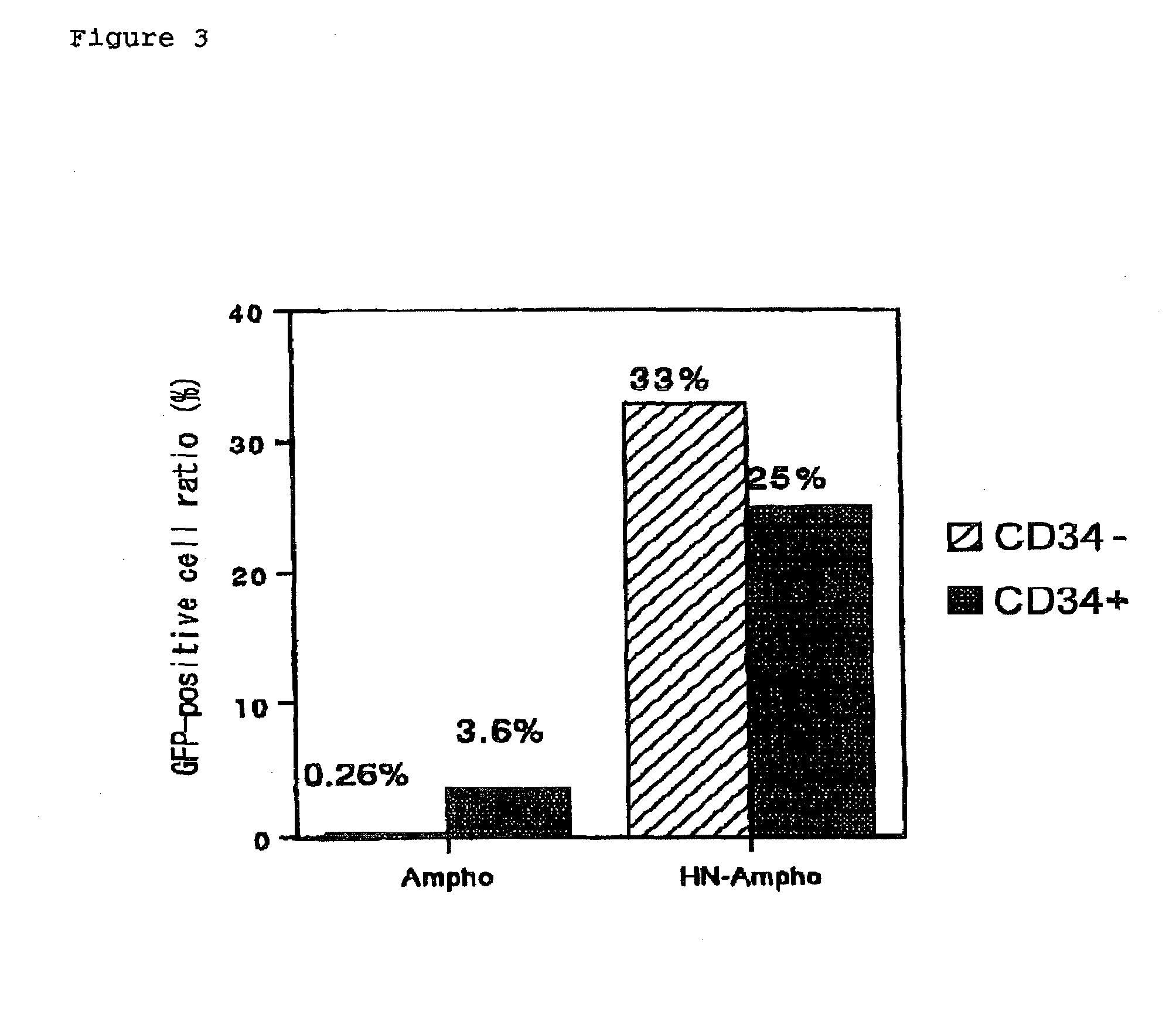Pseudotype retroviral vectors containing membrane proteins having hemagglutinin activity
a technology of paramyxovirus and membrane protein, which is applied in the field of pseudotype retroviruses with hn protein of paramyxovirus, can solve the problems of insufficient infectivity of conventional pseudotype retroviruses to various tissues and cells, difficult to introduce genes using retroviral vectors exhibiting low infectivity against such nondividing cells, and vector systems using conventional techniques have failed to introduce genes into extracellular matrix-abundant cells such as lung airway mucos
- Summary
- Abstract
- Description
- Claims
- Application Information
AI Technical Summary
Benefits of technology
Problems solved by technology
Method used
Image
Examples
example 1
Preparation of Retroviral Vectors Pseudotyped by Sendai Virus Envelope Protein
[0114]The genes for F, HN, and M proteins were obtained by digesting the full-length genome DNA of Sendai virus Z strain pSeV18+b(+) (Hasan, M. K. et al., 1997, J. General Virology 78: 2813-2820), and inserted into pCAGGS (Niwa, H. et al., Gene: 108, 193-9, 1991) at the XhoI site, to prepare expression vectors for F, HN, and M proteins of Sendai virus (referred to as pCAGGS F, pCAGGS HN, and pCAGGS M, respectively).
[0115]The human fetal kidney-derived cell line, 293T cell (Proc. Natl. Acad. Sci. USA, vol.90, pp.8392-8396, 1993), which was used to produce retrovirus, was cultured in D-MEM (GibcoBRL) containing 10% inactivated fetal bovine serum. Culture was carried out in plastic plates (Sumitomo Bakelite). The vector transfection was carried out using LIPOFECTAMINE PLUS (GibcoBRL) according to the provided instruction. 293T cells were plated in a 6-well plastic plate (Sumitomo Bakelite) at a cell density o...
example 2
The Effect of Sendai Virus Envelope Protein on Pseudotyping of Retrovirus Vector
[0117]The retroviral vector pseudotyped by Sendai virus envelope protein was prepared by the above-mentioned method and its effect was assessed.
[0118]293T cells used as a target were plated in a 6-well plastic plate (Sumitomo Bakelite) at a cell density of 1×106 cells / well, and then incubated in a CO2 incubator under 10% CO2 gas at 37° C. for 48 hours. The introduction of the viral vector into the target cells was achieved by overlaying the solution that had been prepared by adding inactivated fetal bovine serum and polybrene (Sigma) at the final concentrations of 10% and 8 μg / ml, respectively, to a solution containing the viral vector. 48 hours after vector introduction, the target cells were fixed using PBS (Invitrogen) containing 2% formaldehyde and 0.2% glutaraldehyde at room temperature for 20 minutes, and then washed once with PBS (Invitrogen). Then, the cells were observed under a fluorescence inv...
example 3
Production of HN-Ampho Pseudotype Retroviral Vector and Comparison of the Efficiency of Gene Transfer into Human Bone Marrow Cells Including Hematopoietic Stem Cells between the Pseudotype Viral Vector and the Amphotropic Retroviral Vector
[0123]1. Culture of 293T Cells
[0124]293T cells were cultured in Dulbecco's modified Eagle medium (DMEM) containing 10% FCS and 800 μg / ml G418 according to the conventional method. Using a 10-cm plate, the cells diluted to 8×106 cells / plate the day before transfection, and then cultured in DMEM containing 10% FCS.
[0125]2. Transfection
[0126]5.6 μg of pMSCV EGFP, 2.4 μg of pCl-Ampho (IMGENEX), and 1.6 μg of pCAGGS-HN were combined together, and 800 μl of OPTIMEM was added thereto. 48 μl of the Plus solution in a Lipofectamine Plus kit (GIBCOBRL) was further added to the mixture, and the resulting mixture was allowed to stand still for 15 minutes. In a separate tube, 800 μl of OPTIMEM and 32 μl of Lipofectamine solution combined together. The DNA mixt...
PUM
| Property | Measurement | Unit |
|---|---|---|
| temperature | aaaaa | aaaaa |
| temperature | aaaaa | aaaaa |
| temperature | aaaaa | aaaaa |
Abstract
Description
Claims
Application Information
 Login to View More
Login to View More - R&D
- Intellectual Property
- Life Sciences
- Materials
- Tech Scout
- Unparalleled Data Quality
- Higher Quality Content
- 60% Fewer Hallucinations
Browse by: Latest US Patents, China's latest patents, Technical Efficacy Thesaurus, Application Domain, Technology Topic, Popular Technical Reports.
© 2025 PatSnap. All rights reserved.Legal|Privacy policy|Modern Slavery Act Transparency Statement|Sitemap|About US| Contact US: help@patsnap.com



